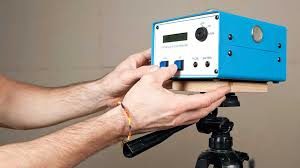Since radon in your indoor air is the larger of health concerns, the EPA recommends that you first test the air in your home for radon before testing for radon in your drinking water. Secondly, if you have tested the air in your home and found a radon problem, you may also want to test your water Radon in the water may also be a concern. If you get water from a public water system, you may want to find out whether the comes from a surface (river, lake, or reservoir) or a ground water (underground) source.If the water comes from a surface water source, most radon in the water will be released to the air before it reaches your tap. If the water comes from a ground water source, then you need to call your Water and Sewage system and ask if they’ve tested the water for radon. If they haven’t tested for water, you may want to request that it be done. If they were to refuse, there are state and national agency you can contact. However, if you are using a well, then you need to know how deep the well is. Most likely, well water is not going to be contaminated with radon. There is a lot of natural filtering that happens. The water needs to seep through rock, which is a natural filtering agent, thereby releasing the radon from the water. If you have a surface water well, the depth of the well plays a big part in the possible presence of radon. You should always have a radon test done if you have any concerns that there may be radon present in your home or in your water.

The different types of thermostats
